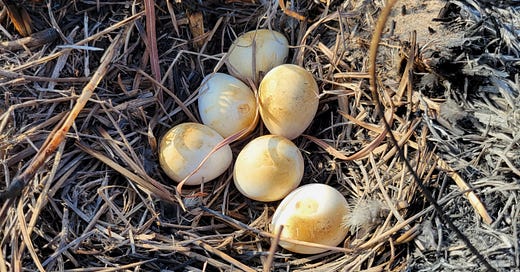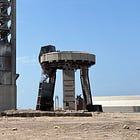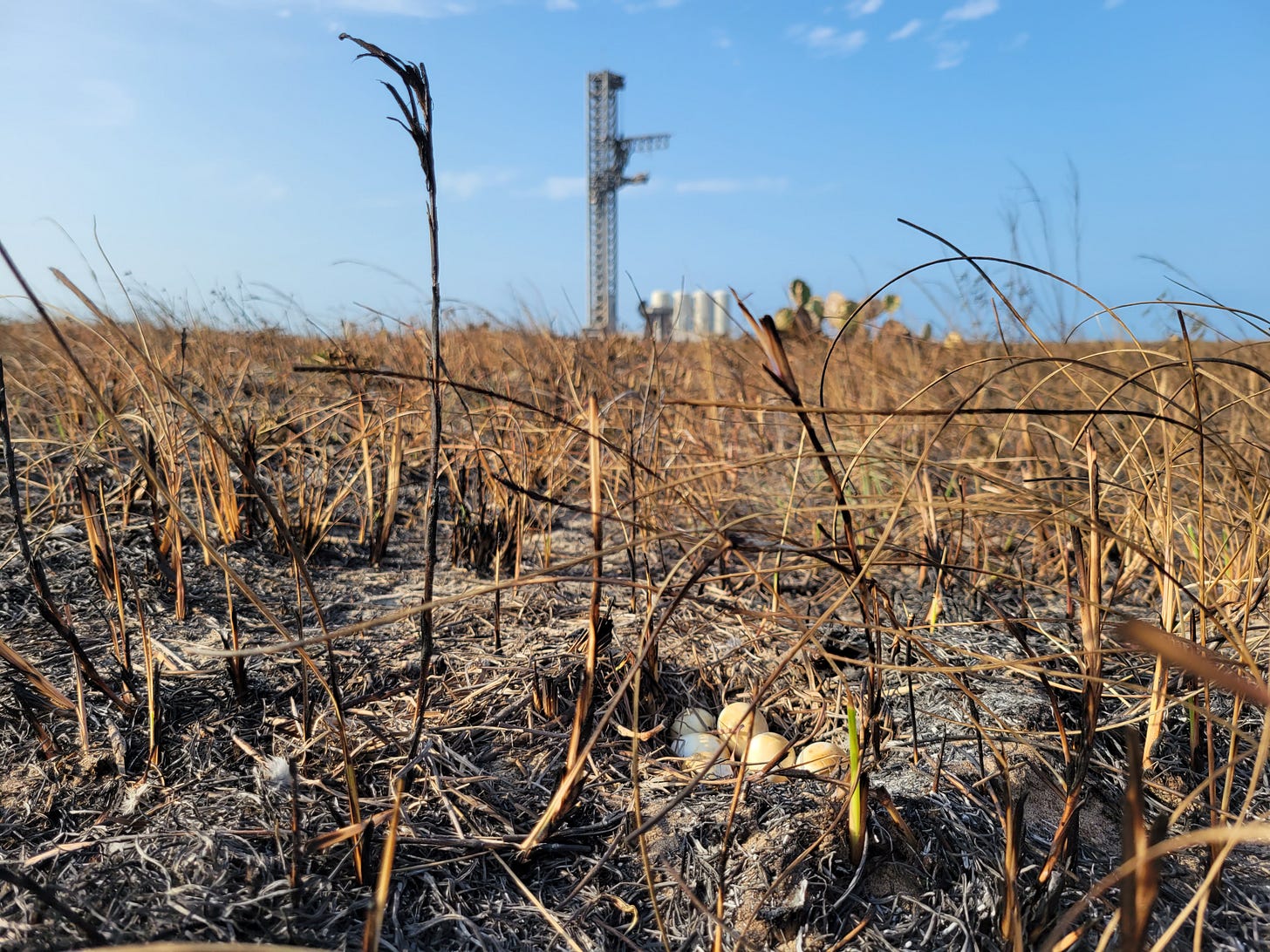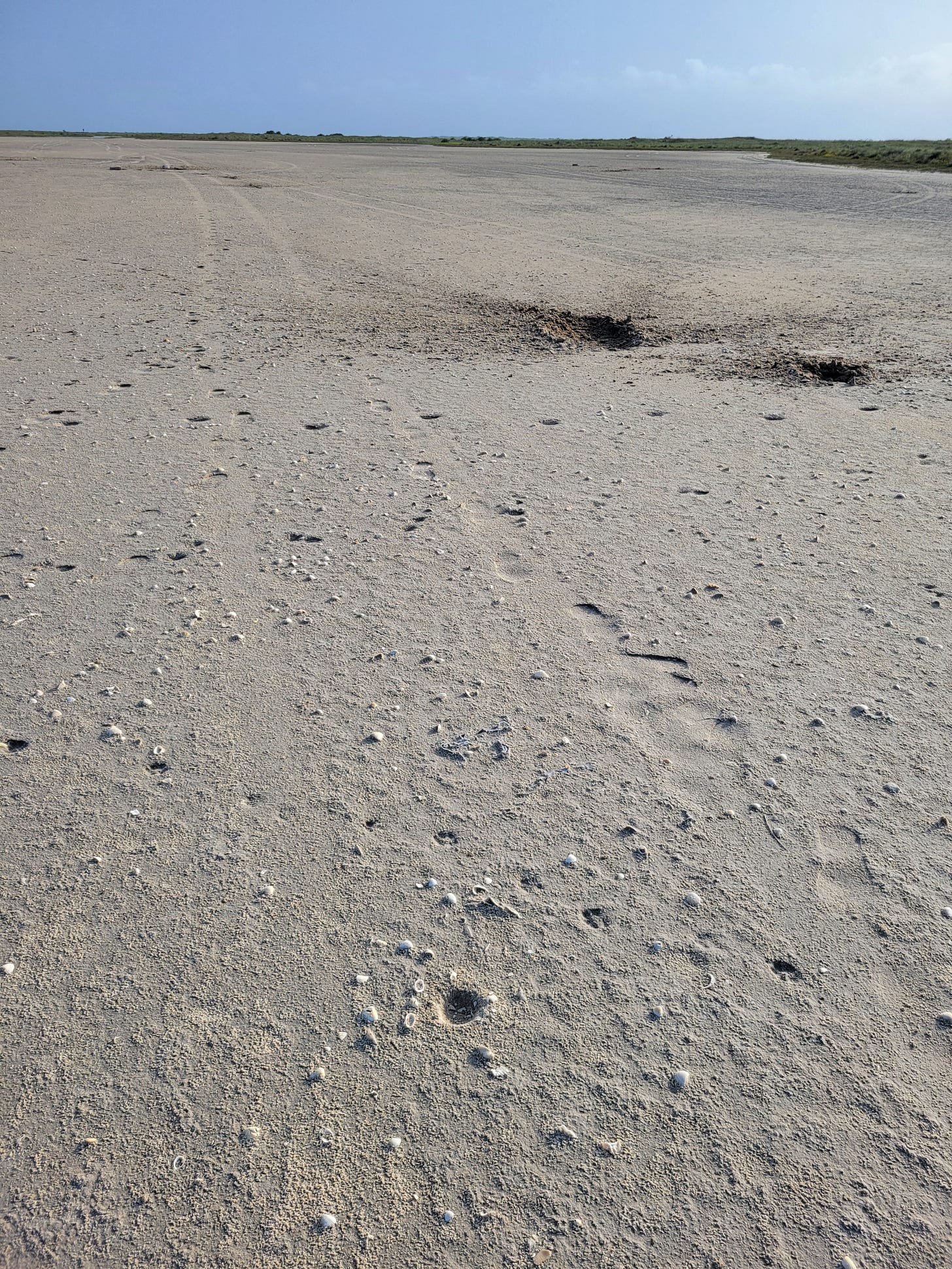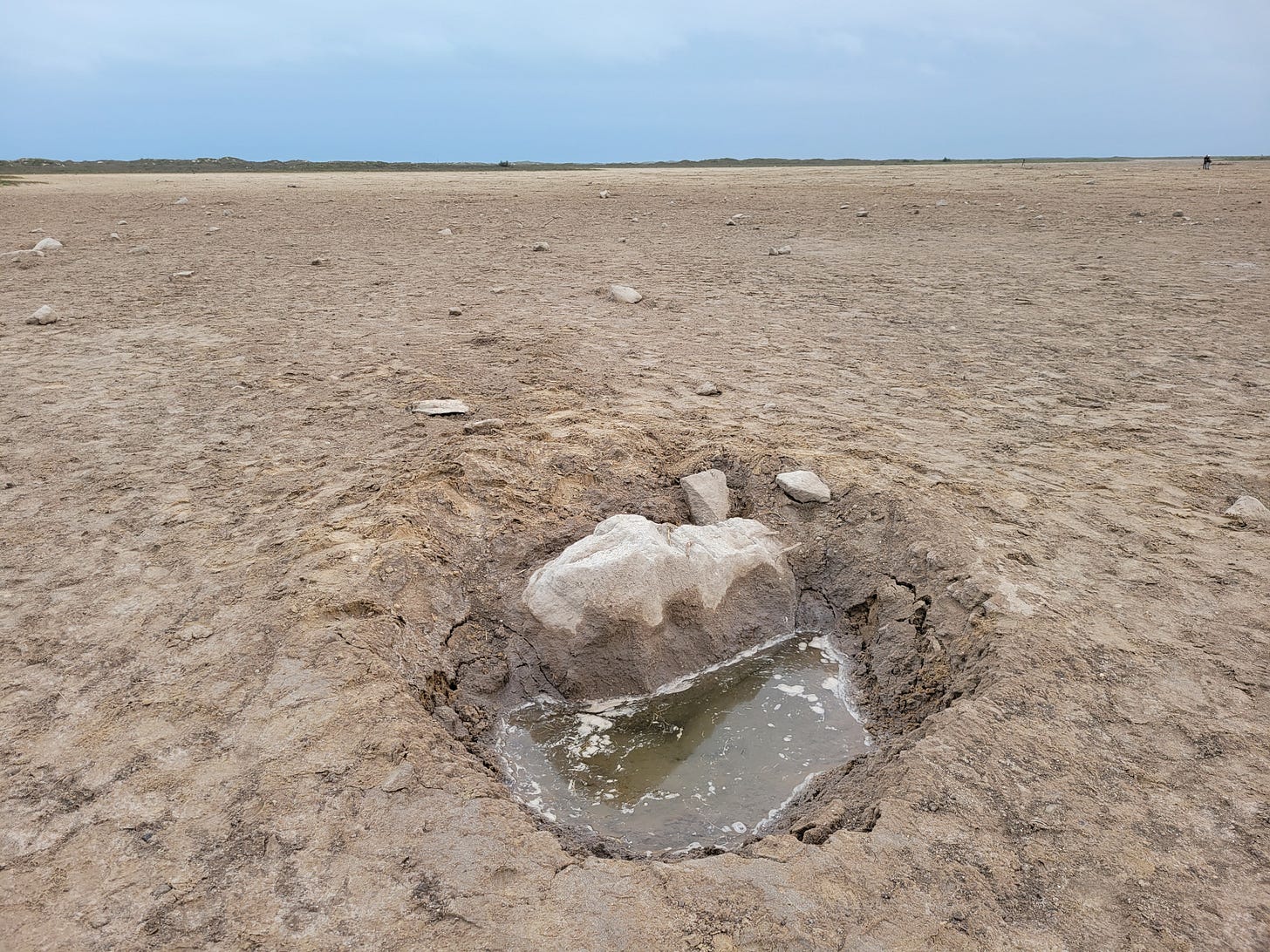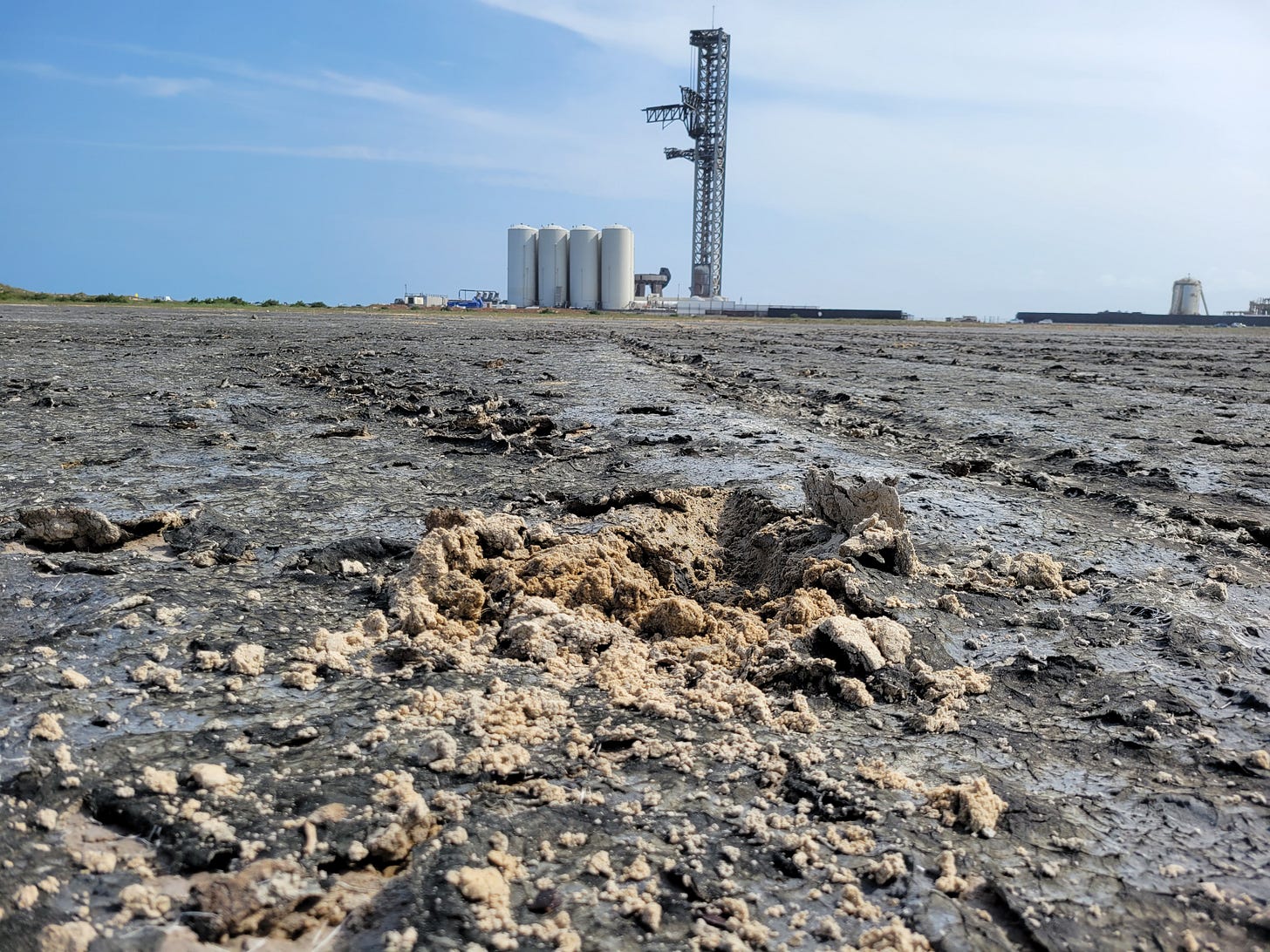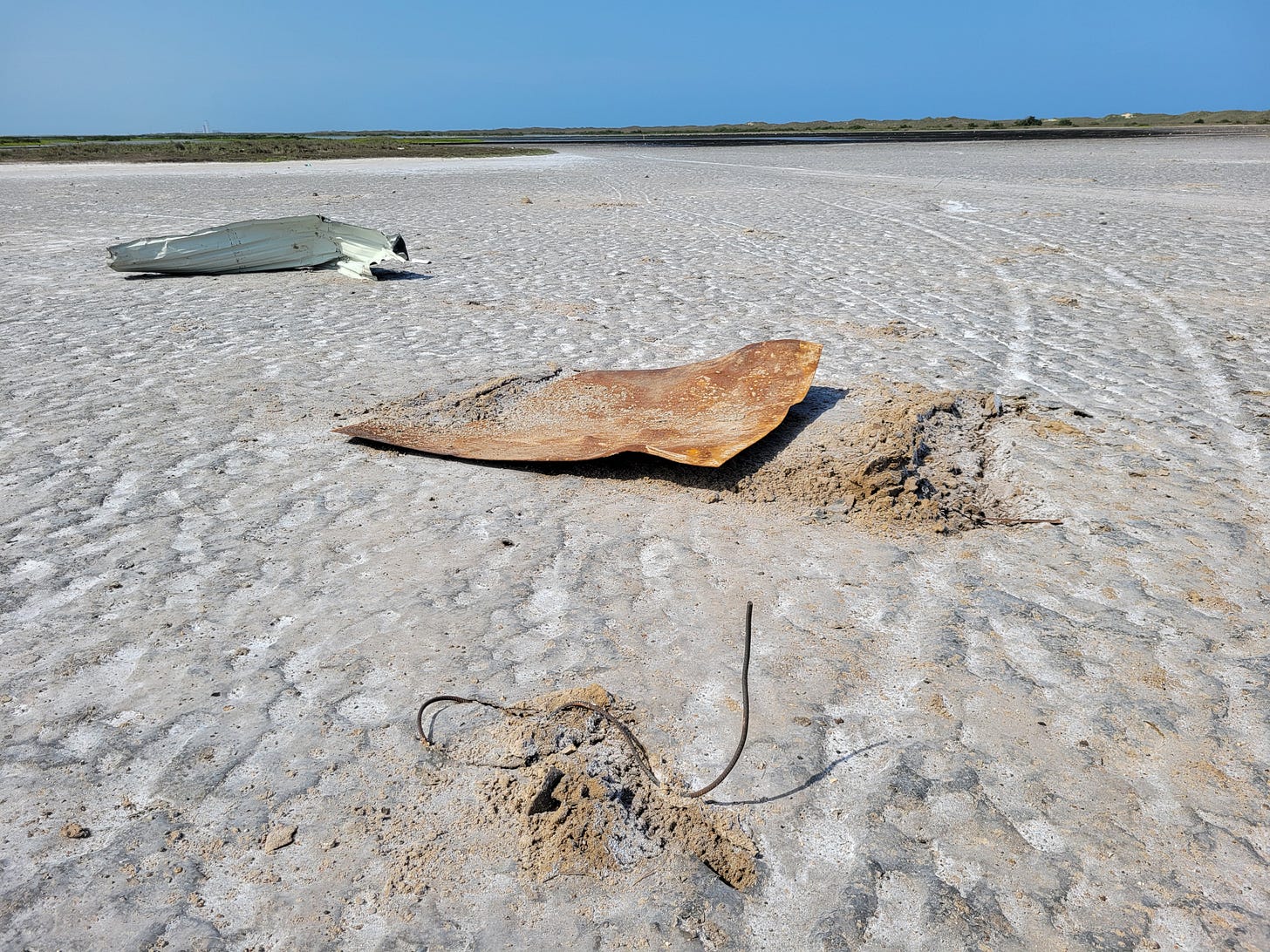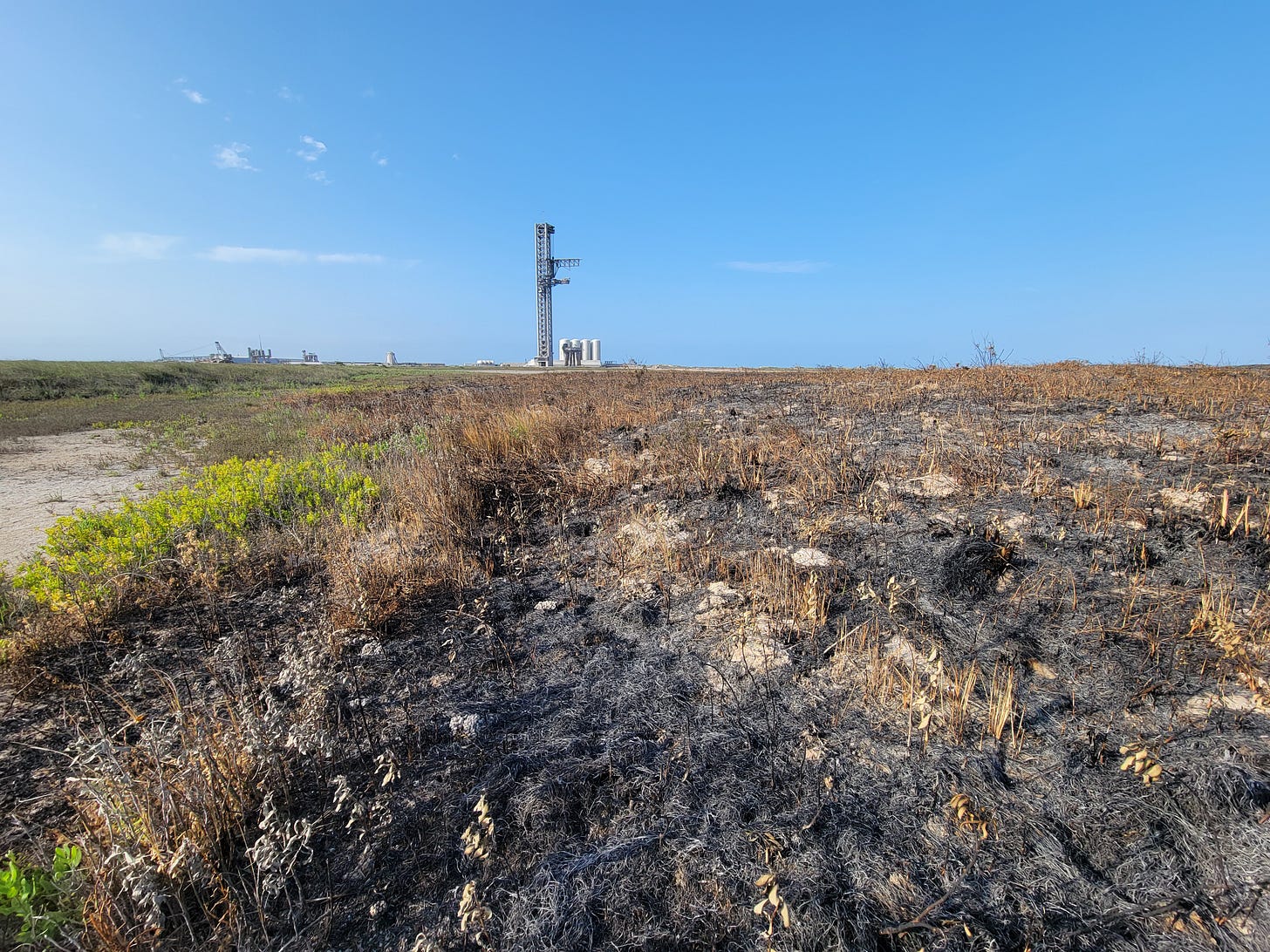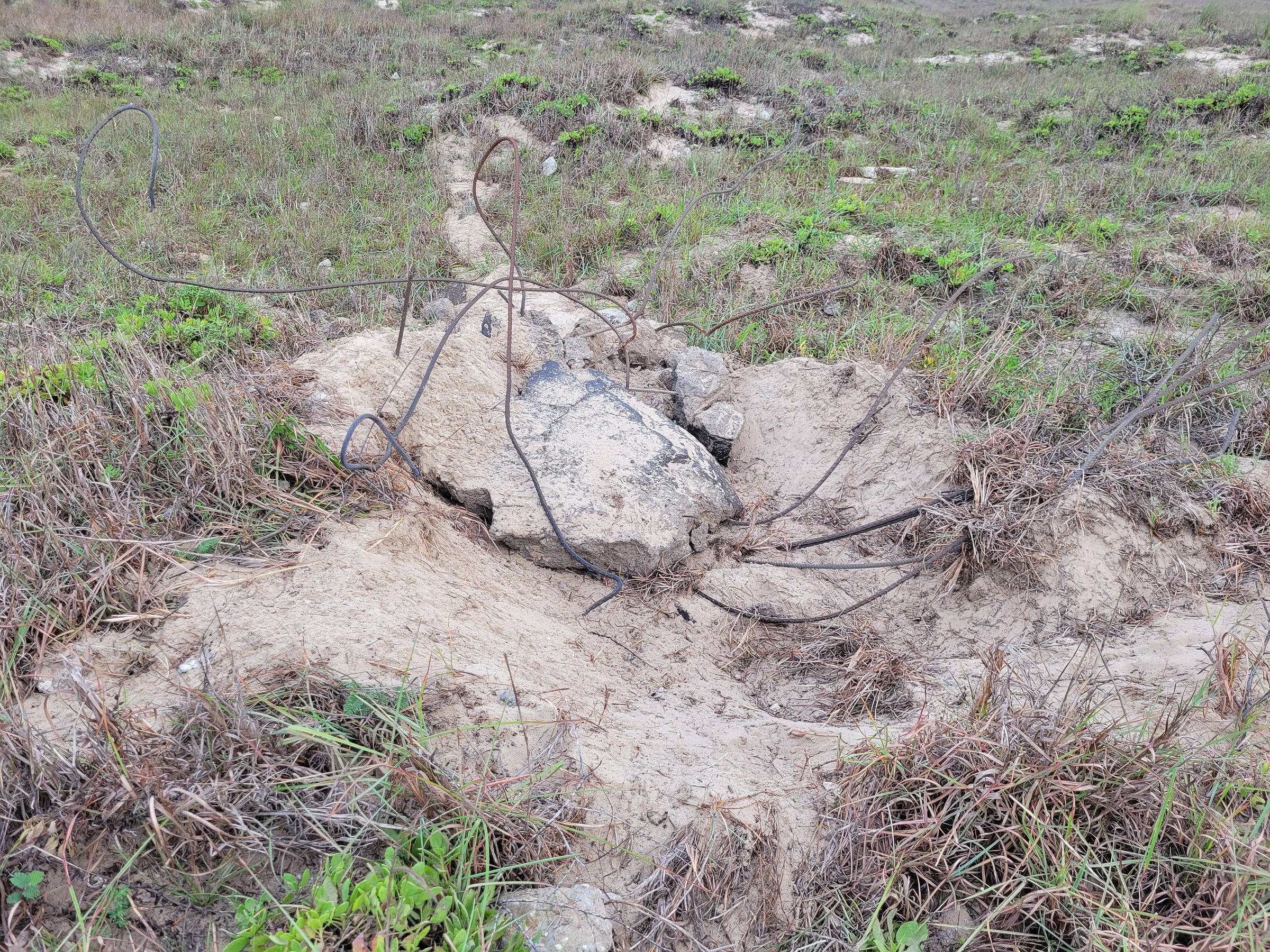I’m going to cut to the chase here. Unless you’ve been sleeping under a rock (or rather a mini-van sized exploded concrete block) you’re aware that SpaceX’s initial launch of the Starship Superheavy caused some damage to the surrounding wildlife habitat. I covered the basics here yesterday:
I’ve got some photos taken as part of a Biological Survey completed two days after the launch event. These images are all licensed under Creative Commons to be shared by the public and to prevent another claim on them for DCMA shenanigans. I am not the photographer; they can be shared with attribution as outlined on the album linked at the bottom.
The Bobcat is not an endangered species. SpaceX was required to increase signage along Highway 4, and use employee shuttle busses as a condition of the PEA/FONSI approval. FAA has not shared the status of these corrective actions.
This nest is likely abandoned, and the eggs were destroyed as the result of a 3.5 acre fire. The N. Bobwhite is not an endangered species but shares an overlapping habitat with the Piping Plover and Red Knots.
The above image shows a scrape (simple sand nest), common to shorebirds in the region, of a Snowy Plover. This is part of the Critical Wildlife habitat protected under the Endangered Species Act. Medium to Large pieces of debris from the pad can be seen in the same image.
The above image may look benign, but this soft crushable debris, from the dissicated launch pad, was consistently spread throughout hundreds of acres surrounding the launch pad.
Concrete, when exposed to water, can increase the pH of the water, often drastically so, and can be toxic to micro and macrobiota and wildlife. The mixture may contain metals or other pollutants.
“Hundreds to thousands” of pieces of medium to large debris, as shown, were strewn in the habitats adjacent to the launch pad.
These lands may look like a big field of mud, but the surface is a complex and sensitive crust of algae that serves as critical habitat needed for the Piping Plover and Red Knots, two protected species under the Endangered Species Act. There is no known way to facilitate algal formation; it can take 5-10 years to return to its natural state.
A grass fire in the area surrounding the launch site, estimated at 3.5 acres by the Fish and Wildlife Service. Fires were expected in the PEA, though the extent and probability was unclear.
They say an image is worth a thousand words, so have a look for yourself.
🚨Want to help protect these fragile Texas Coastlines?
Consider a donation to the Coastal Bend Bays & Estuaries Program. They do amazing work in South Texas.
And why not subscribe while you’re at it?
Thanks for reading! Eric

